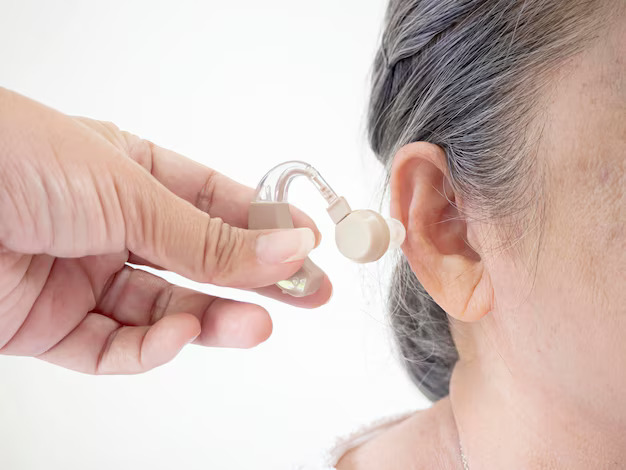As we age, taking care of our hearing becomes increasingly important. Hearing aid protection, hearing tests for seniors, and preventing earwax buildup are crucial components of maintaining auditory health. With millions relying on hearing aids for better communication, protecting these devices and keeping the ears clean is vital to enhance quality of life and avoid long-term damage.
This blog provides practical guidance for seniors, caregivers, and family members looking to safeguard hearing health effectively.
Why Hearing Aid Protection Matters
Hearing aids are delicate electronic devices that play a crucial role in enhancing sound perception. Without proper protection, they are susceptible to damage from:
- Moisture
- Dust
- Physical impacts
- Earwax blockage
Tips for Effective Hearing Aid Protection:
- Use Protective Cases:
- Always store hearing aids in a hard-shell protective case when not in use to avoid accidental drops or scratches.
- Avoid Moisture Exposure:
- Moisture is one of the top enemies of hearing aids. Keep them dry by:
- Removing them before showering or swimming
- Using a dehumidifier overnight
- Wiping them with a soft, dry cloth daily
- Keep Away from Hairspray and Lotions:
- Cosmetics can clog microphones and damage circuits. Apply these products before inserting the hearing aids.
- Clean Regularly:
- Regular cleaning prevents earwax and debris from clogging the device. Use tools provided by the manufacturer and follow cleaning instructions.
- Routine Servicing:
- Visit your audiologist or hearing aid provider for routine servicing to ensure all components are functioning well.
Importance of Hearing Test for Seniors
Hearing loss is common among older adults, but it often develops gradually. According to global health reports, over 50% of seniors experience some degree of hearing loss by age 75.
Why Regular Hearing Tests Matter:
- Early Detection of Hearing Loss:
- Regular testing can catch signs of hearing decline early, allowing for timely intervention.
- Cognitive Health Link:
- Untreated hearing loss is associated with memory decline, social isolation, and depression.
- Device Calibration:
- Hearing aids need to be adjusted over time. Routine testing ensures your hearing aid settings remain effective.
Recommended Frequency:
Seniors should have a comprehensive hearing test at least once a year, or sooner if symptoms arise such as:
- Asking people to repeat themselves
- Turning up TV volume excessively
- Difficulty understanding conversations in noisy environments
What to Expect During a Hearing Test:
A certified audiologist will:
- Perform a physical ear check
- Conduct tone and speech recognition tests
- Review your hearing history and current concerns
- Offer solutions such as hearing aids, assistive devices, or medical referrals
Preventing Earwax Buildup: A Key Step in Hearing Health
Preventing Earwax Buildup (cerumen) plays a protective role by trapping dust and bacteria, but excessive buildup can lead to:
- Blocked hearing aid microphones
- Whistling feedback noises
- Reduced hearing clarity
- Discomfort and irritation
Common Causes of Earwax Buildup:
- Inserting cotton swabs or other objects into the ear
- Naturally narrow ear canals
- Hairy ear canals
- Use of hearing aids, which can push wax deeper
Tips for Preventing Earwax Buildup:
- Avoid Q-tips:
- Inserting objects into the ear canal can push wax further in. Clean only the outer ear with a damp cloth.
- Use Earwax Softening Drops:
- Over-the-counter drops help loosen hardened wax, allowing it to exit naturally.
- Stay Hydrated and Eat Well:
- Good hydration supports earwax mobility. Omega-3s and magnesium can also promote ear health.
- Schedule Regular Ear Checkups:
- Audiologists can safely remove wax using suction or irrigation. Never attempt DIY ear flushing if you wear hearing aids.
- Monitor Hearing Aid Performance:
- If the sound seems muffled, it may be due to wax. Remove and clean the earmold or speaker tip gently.
Combining Protection, Testing, and Prevention: A Holistic Approach
For seniors, combining hearing aid protection, hearing tests, and wax prevention delivers the best outcomes. Here’s how they work together:
Focus AreaBenefitHearing Aid ProtectionPrevents costly repairs and ensures sound clarityHearing Test for SeniorsDetects hearing changes earlyPreventing Earwax BuildupKeeps ear canals and devices clean
By addressing all three, seniors can enjoy improved communication, safety, and social engagement.
Signs You May Need Professional Help
Don't wait for serious symptoms. Seek professional advice if you notice:
- Constant ringing or buzzing in the ears (tinnitus)
- Sudden or rapid hearing loss
- Pain, discharge, or a feeling of fullness in the ear
- Feedback noise from hearing aids
- Difficulty following conversations
An audiologist can evaluate your situation and tailor solutions, whether it’s adjusting a hearing aid or treating excessive wax buildup.
FAQs
1. How do I clean my hearing aids properly?
Use a soft brush or cloth daily. Avoid water or alcohol. Some users benefit from using a hearing aid dryer overnight.
2. Can earwax damage hearing aids?
Yes. Earwax can block microphones and speakers, causing muffled sound or malfunction.
3. How often should seniors have hearing tests?
Once every 12 months, or sooner if new symptoms arise.
4. What is the safest way to remove earwax?
Let it exit naturally, or use doctor-recommended drops. Visit an audiologist for stubborn buildup.
5. Why is hearing health linked to mental health in seniors?
Hearing loss can lead to isolation, depression, and cognitive decline if left untreated.
Conclusion
Hearing aid protection, regular hearing test for seniors, and preventing earwax buildup are three pillars of senior hearing health. By being proactive, seniors can maintain their independence, stay connected with loved ones, and enjoy an enhanced quality of life.





Comments